Problems with plastics (including dryer lint)
Olychick
3 years ago
Featured Answer
Comments (59)
Related Discussions
Why does so much lint escape dryers?
Comments (39)You are right, you must insulate your dryer vent where it runs through the attic. By heating your attic space you will also promote ice damming if it gets cold enough in your area. I don't know if there is special insulation to retrofit your pipe up there but basically, you want insulation wrapped around, then a moisture barrier over it - I guess you could use wire or cable ties to hold the insulation in place (don't overtighten, you want that insulation to stay fluffy) then wrap with appropriate plastic. I am not sure if the plastic we use as a moisture barrier under drywall etc is suitable or rated correctly for it. If someone here doesn't know what is, you may want to repost your question in the hvac forum regarding insulation. The most important aspect of why so much lint gets through, which we haven't touched upon, is the necessity to balance safety with blocking nuisance lint (which I guess could become dangerous in itself if you have a fireplace chimney nearby) - if the lint filter was too effective, it would block too quickly and start causing problems like we have been discussing. It would actually make sense for dryers to have some sort of safety bypass like car engines do for oil filters, if too high a pressure in the filter is detected, the filter is bypassed to allow oil to flow freely, rather than starving the engine of oil. If you have a problem with vermin, it's tempting to put a grate or wire cover over the dryer vent (if it's near the ground) but any covering/straining you do with the dryer vent necessitates more maintenance, as you need to ensure they don't get blocked....See MoreA/C compressor failed - clogged with clothes dryer lint
Comments (3)I'm with Jake, I don't think that is what killed the compressors, if indeed they were dead in the first place. Lint could surely clog the condensing coils over time but you would have noticed the unit not cooling most likely long before it caused damage. However, if it is a concern, I would suggest you move the vent as Jake suggests....See MoreLG Combo Washer Dryer Lint Build-Up
Comments (29)Just incase others have a similar problem - I thought I was getting something similar to this problem. Clothes not drying properly however there seemed to be a lot of steam coming out of the drawer / tray. Turns out the cold water solenoid valve had died (the top left hand of the machine with the 3 blue tabs, just right to the red square part in the picture on the comment above) so water wasn't flowing into the condenser and then the steam wasn't being condensed - you could tell this was the problem since intermittently you should hear a sudden "whoosh" for a second or two every few minutes of the valve opening up and water flowing out. It did appear that less water was coming out the grey pipe on the back of the machine too, but this was because no extra water was coming into the system via the condenser. Anyway bought new cold water solenoid valve for £25, two screws off, 3 pipes on and off and it was fixed. Couldn't find much about this on the web - Just an idea....See MorePost LG 2.3 CF WM3455HW 24" washer/dryer combo problems here:
Comments (4)Drain-height: Another "possible" issue, posted in a customer YouTube video (in this case, regarding the 3.6 CF LG combo washer/dryer), may be drain-hose height. The customer's dryer component of the machine stopped working, so he lowered his drainhose height to floor-level (to a bucket), which apparently resolved his problem. It's probably more likely that he merely has a defective pump, working at lower capacity, or not working at all (although, if it's not working, I don't know why he doesn't have problems during the wash cycle). According to the LG documentation for the 2.3 CF model, it indicates that the drain service can be no higher than 96" (which is pretty darned high). Note that there is no mention of a minimum drain height. (As I seem to recall, in comparison, I believe Miele recommends a drain height no higher than 36"). But since the customer's drain height shown in the YouTube video seems no higher than about 46", it's probably more than likely that this customer merely has a defective pump. Nevertheless, since we're still at the "cement board" stage of our laundry-area renovation, this prompted me to re-consider pulling off the cement board, and having a plumber re-route the supplies and drain to a lower height (it's currently at 46"). This also gives us the opportunity to hide the supply and drain from view, since this is an open-plan installation. LG 3.6 CF combo washer/dryer customer YouTube video: http://www.youtube.com/watch?v=8EhzuzSk2Ok LG documentaion for the LG 2.3 CF model: WM3455HW 24" combo washer/dryer: http://www.lg.com/us/support-product/lg-WM3455HW# This post was edited by studio460 on Sun, Jun 2, 13 at 18:23...See MoreOlychick
3 years agoOlychick
3 years agoOlychick
3 years agodcarch7 d c f l a s h 7 @ y a h o o . c o m
3 years agolast modified: 3 years agoOlychick thanked dcarch7 d c f l a s h 7 @ y a h o o . c o mdcarch7 d c f l a s h 7 @ y a h o o . c o m
3 years agoOlychick thanked dcarch7 d c f l a s h 7 @ y a h o o . c o mOlychick
3 years agoOlychick
3 years agodcarch7 d c f l a s h 7 @ y a h o o . c o m
3 years agolast modified: 3 years agoOlychick thanked dcarch7 d c f l a s h 7 @ y a h o o . c o mdcarch7 d c f l a s h 7 @ y a h o o . c o m
3 years agolast modified: 3 years agoOlychick thanked dcarch7 d c f l a s h 7 @ y a h o o . c o mdcarch7 d c f l a s h 7 @ y a h o o . c o m
3 years agoOlychick thanked dcarch7 d c f l a s h 7 @ y a h o o . c o mdcarch7 d c f l a s h 7 @ y a h o o . c o m
3 years agolast modified: 3 years agoElmer J Fudd
3 years agolast modified: 3 years agodcarch7 d c f l a s h 7 @ y a h o o . c o m
3 years agoElmer J Fudd
3 years agodcarch7 d c f l a s h 7 @ y a h o o . c o m
3 years agolast modified: 3 years agoElmer J Fudd
3 years agolast modified: 3 years agodcarch7 d c f l a s h 7 @ y a h o o . c o m
3 years agoElmer J Fudd
3 years agolast modified: 3 years agodcarch7 d c f l a s h 7 @ y a h o o . c o m
3 years agolast modified: 3 years agoOlychick
3 years agoElmer J Fudd
3 years agolast modified: 3 years ago
Related Stories
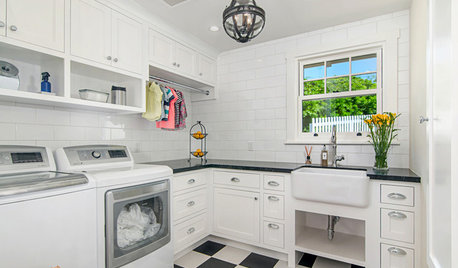
HOUSEKEEPING4 Tips to Help Prevent Winter Dryer Fires
Find out why dryer fires spike in the winter and how you can prevent them in your home
Full Story
LAUNDRY ROOMSHow to Avoid Dryer Fires During the Holidays
Find out how to keep your laundry room, and your home, safe during the holiday season
Full Story
SMALL SPACES5 Solutions to Small-Bathroom Problems
Whether your room lacks a separate shower, adequate storage or a sense of spaciousness, there are remedies at hand
Full Story
KITCHEN DESIGNThe Most Common Kitchen Design Problems and How to Tackle Them
Check out these frequent dilemmas and expert tips for getting your kitchen design right
Full Story
HOUSEKEEPING10 Problems Your House May Be Trying to Show You
Ignore some of these signs and you may end up with major issues. We tell you which are normal and which are cause for concern
Full Story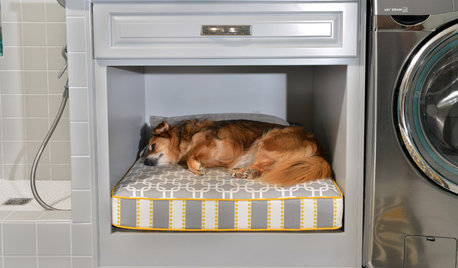
PETSRoom of the Day: Laundry Room Goes to the Dogs
Muddy paws are no problem in this new multipurpose room
Full Story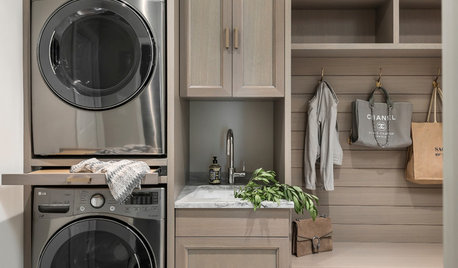
TRENDING NOWThe Top 10 Laundry Room Photos of 2018
Favorite features include drying racks and rods, folding areas and improved ergonomics to help with washday
Full Story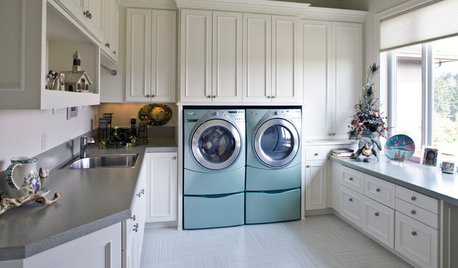
LAUNDRY ROOMSOne of the Biggest Building-Code Offenders in the Laundry Room
A dryer vent specialist shares what to do — and what to avoid — to keep things safe and efficient
Full Story
BATHROOM DESIGNA Designer Shares Her Master-Bathroom Wish List
She's planning her own renovation and daydreaming about what to include. What amenities are must-haves in your remodel or new build?
Full Story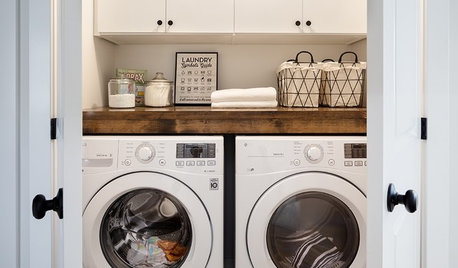
LAUNDRY ROOMS10 Small-But-Mighty Laundry Stations for an Easier Washday
See how to get an efficient and attractive washer-dryer setup by tucking it in a closet or a multipurpose room
Full Story



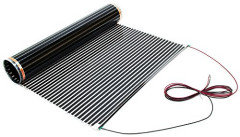
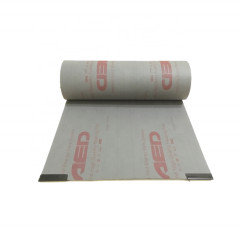
DawnInCal